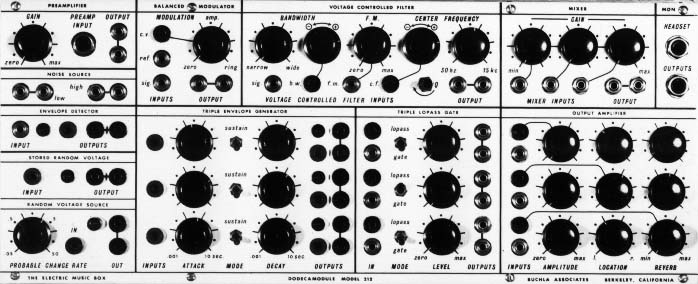◊ Historic Buchla Modules
Buchla pages > Buchla 200 modules > 212 Dodecamodule
Buchla pages > Buchla 200 modules > 212 Dodecamodule

The Dodecamodule Model 212 allows even the smallest Electric Music Box system to incorporate the sophistication and diversity of function formerly available only in large studio systems.
Model 212 integrates the following 12 functions into one compact module: